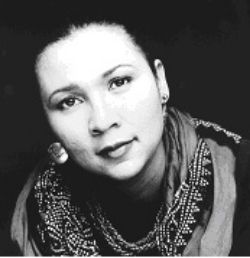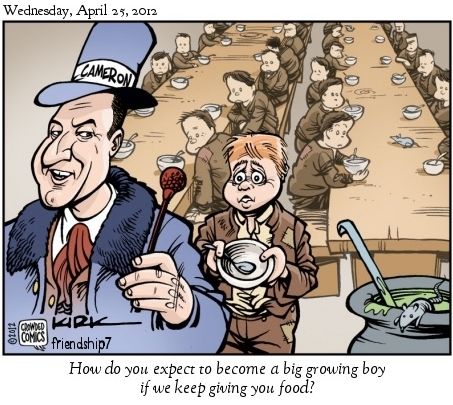The firing of New York Times CEO Jill Abramson for filing a law suit against the Times for gender based pay discrimination has been one of the main stories on twitter the last couple of weeks.
It is plain that the abrupt departure of executive editor Jill Abramson, the first woman ever to hold that position, was related to the fact that she protested that she was paid less than her male predecessor in one job and her male successor and subordinates in another. According to the New Yorker and the Daily Beast, her starting salary as executive editor was more than $100,000 lower than the salary of the man before her-and precisely $100,000 lower when she had earlier become Washington bureau chief.
The New York Times, however, with a straight face, stated that her firing was not related to any such issue but due to the fact that her leadership style was “inappropriate,” that she was too “difficult and demanding”.
Sex, Race and Class Dynamics Among the 1%.
As the Daily Beast noted, there have been similar complaints for years about powerful women like Dianne Feinstein, Barbara Mikulski and Hillary Clinton. Qualities that earn praise for men in office-being tough, holding subordinates and colleagues alike to high standards-invite blame for women in a culture that believes that even those professionals who manage to break the glass ceiling should nonetheless know their place (what’s an extra $100,000 a year?) Could it actually be that such women have managed to be so successful precisely because they are assertive and demanding? The Times won eight Pulitzer Prizes during Abramson’s brief and successful tenure.
Fuel was added to the twitter fire when it turned out that the narrative included an added tidbit of gossip about squabbling among two token groups –white women and black men. Apparently there was some dispute when Abramson tried to bring in a second managing editor. Dan Baquet, an African American male, who was at that time the sole managing editor objected and, following the firing of Abramson, became her successor and the first African American to be elevated to the CEO position.

Sex, Race and Class Dynamics Among the Rest of Us.
While we all seem to enjoy a little voyeurism into the lives of the rich and famous, we are now going to turn to another pay discrimination case occurring in the same time frame which received much less media attention, but which we maintain is potentially much more important.
In New York City’s you may have seen protests outside of City Hall recently supporting the 5,000 school safety agents who have signed on to a class action lawsuit accusing the city of violating the federal Equal Pay Act by paying them less than the special security officers who perform similar work at homeless shelters and hospitals.
Approximately 70 percent of school safety agents are female, but they make about 20 percent less than special security officers, who are predominantly male. A special officer’s top salary is about $42,000 a year, compared to about $35,000 for a safety agent, the article reports.
School safety agents are responsible for patrolling buildings, intervening in altercations between students and ensuring that visitors are authorized. They confiscate knives and witness gang activity as well. They act as peace officers under New York state law, so they – as well as the special officers – carry handcuffs, make arrests and use deadly force, if necessary, to perform their jobs.
Safety agents are hired and trained by the police department; special officers work for the Health and Hospital Corporation, as well as six mayoral agencies including the Department of Homeless Services, the Human Resources Administration and the Administration of Children’s Services.
During Mayor de Blasio’s campaign for Mayor he promised to address this issue.
While the city’s law depart confirms that it is evaluating the case, the DOE refused to comment at this time and the city’s lawyers are currently in the courts trying to delay this case while de Blasio finishes his budget negotiations with city workers.
One reason why de Blasio might want a delay would be that if the lawsuit wins, de Blasio will have to budget up to $35 million dollars more per year just to bring this one group of workers up to pay equity– and there are millions of similar pay discrepancies around the country and the world, especially when the criteria is that the work must be the same in skills and qualifications (comparable worth)but not necessarily the same exact job. To rectify Abramson’s pay discrepancy, on the other hand, will only cost the New York Times $100,000 a year plus back pay and perhaps similar adjustments for the small percentage of workers in the rarified 1%). If the safety agents win, it will, bring hundreds, perhaps thousands of women workers out of poverty.If all workers who were underpaid in comparable jobs it would increase wages as a whole by 13.5%. So the stakes are pretty high.
One area where progress in raising women’s wages is being made is in the fast food industry where 2/3 of the workers are women, many with children, many making minimum wage. Beginning in November 2012, a series of almost spontaneous one day strikes began culminating on May 15, 2014 in simultaneous strikes in 158 cities and solidarity actions in 93 international cities across 36 countries, demanding that the minimum wage be raised to $15 an hour. This past week 101 workers got arrested outside the McDonald’s shareholders meeting. This vibrant movement has recently been supported by the SEIU Union.
A number of cities and states have already responded and raised their minimum wages (Hawaii, Sante Fe, Minnesota plus at least 12 others)and it looks like other states will follow. President Obama now supports a $10.10 federal minimum wage. It is interesting, however, that this struggle has not been based specifically on gender pay inequity but raising workers as a whole out of poverty.
What Do We Need to Do to End Sex Discrimination in the Workplace?
According to the Equal Pay Act of 1963:
No employer having employees subject to any provisions of this section [section 206 of title 29 of the United States Code] shall discriminate, within any establishment in which such employees are employed, between employees on the basis of sex by paying wages to employees in such establishment at a rate less than the rate at which he pays wages to employees of the opposite sex in such establishment for equal work on jobs[,] the performance of which requires equal skill, effort, and responsibility, and which are performed under similar working conditions, except where such payment is made pursuant to (i) a seniority system; (ii) a merit system; (iii) a system which measures earnings by quantity or quality of production; or (iv) a differential based on any other factor other than sex [ . . . . ] [2]
The Equal Pay Act seemed so simple when it was passed in 1963. If there is sex discrimination in jobs, we should just legislate that all workers should get the same pay for the same work, if discrimination was the only reason there was a discrepancy.
The most commonly used indicator to determine discrimination against women in the workplace is the male-female income difference known as the “gender wage gap.”It is a very narrow, yet general statistic based on the ratio of female to male median yearly earnings among full-time, year-round workers in the marketplace. This statistic is gathered by the US Census bureau and used by government agencies and economists. In 2010 the median income of FTYR workers was $42,800 for men, compared to $34,700 for women.
As it turns out, accordfing to the gender wage gap, 50 years later women still only make 77% of every dollar earned by men and progress in closing the wage gap has stalled in recent years. The issue, like most others, is a lot more complicated than it appears at first glance.




Recent Comments